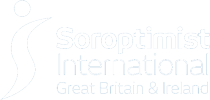
President Margaret Smith is pictured with our speaker Duncan Colin-Jones and club member Christine White who had suggested he be invited to address the club. During his clinical career Duncan had worked locally at QA hospital.
He challenged the club to answer the question “How much is a life worth?” which had been his focus in his work with NICE, the National Institute for Clinical Excellence. One part of their role was to evaluate new drug treatments for efficacy and cost-effectiveness. He reminded us that any money for new drug treatments had to be taken away from something else within the NHS capped budget. The money spent on drugs amounted to £11bn a year, about a tenth of the total NHS spend.
Duncan included a quick biology lesson, to explain the structure of human cells, and the bits of DNA (genes) that cause cancer. Modern developments in testing (including one advance he mentioned that had only been reported in the US this month) mean that specific chemotherapy drugs can be tailored to target particular defective genes.
But in answer to his question, he explained that NICE had developed a measure called Quality Adjusted Life Year (QALY), ranging from full health=1 to dead=0, to compare the relative benefits of different drugs. In the drug appraisals he had been involved in the allowable cost was set at about £20,000 per QALY, rising to £30,000 by the time he retired. This tried to take account of the benefit against quality of life measures such as mobility, self care, pain and anxiety, against the potential advantages and disadvantages of drugs, particularly chemotherapy treatments. This led to a discussion about the value to society of particular patients, such as a young mother rather than an older person, and how rigid the decisions had to be, against a limited set of data on the outcomes from use of the drugs. Overall, a serious topic explained with plenty of examples and inspiring an interesting debate of the issues.

